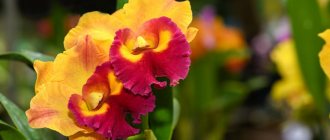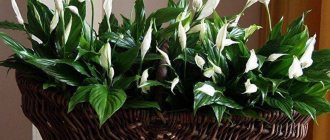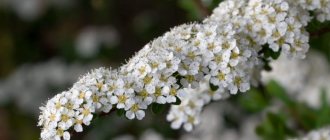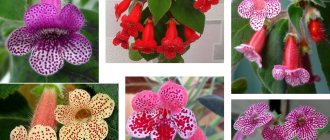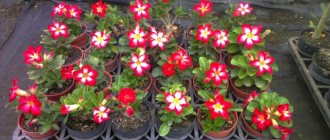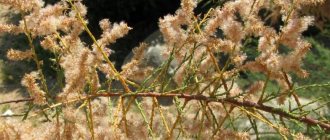Dracaena palm: types, benefits and harm, homeland, poisonous or not for humans and cats: description, photo
Dracaena Derema
Dracaena fringe
Dracaena Godsefa
Dracaena Reflexa
Dracaena Fragrant
Africa is considered the birthplace of the dracaena palm tree. It is in this place on the globe that you can find the largest number of representatives of this plant. Since the climate here is the most favorable for them, dracaenas growing in Africa, as a rule, are always very tall. Lower species are found in India, South America and the Canary Islands. Palm trees growing in these areas are less finicky, which is why they are most often sold in our country.
When purchasing dracaena, you should take into account that it is a low-toxic plant, the juice of which can harm the human digestive system. When ingested, it begins to irritate the mucous membranes of the stomach and intestines, and against this background a person may develop diarrhea, which will be accompanied by vomiting and nausea. And although you definitely won’t die from this, it will still be better if you take measures that will prevent dracaena juice from getting on the mucous membranes of the mouth.
Types of dracaena palm:
- Dracaena Derema (tall plant with characteristic white lines on the leaves)
- Dracaena marginata (has long leaves that are located at the very top of the tree trunk)
- Dracaena Godsepha (looks like a bush with large spotted leaves)
- Dracaena Reflexa (distinctive feature is the presence of a tree-like trunk and long curved leaves)
- Dracaena fragrant (adult plant blooms with beautiful white flowers)
Benefits of dracaena:
- Removes formaldehyde, ammonia and carbon from the air
- Ionizes the air around it
- Creates a favorable climate in the house
- Releases substances into the air that promote human health
Harm of dracaena:
- May cause an allergic reaction
- If ingested, it causes diarrhea
- Dust collected on leaves can become a haven for dust mites
Description of varieties and photos
See how different varieties of these indoor plants differ from each other.
Bordered
Dracaena marginata is perhaps the most common plant from the genus Dracaena among gardeners. Wild dracaena can be found on the island of Madagascar . Under natural conditions, marginata reaches five meters in height. In indoor conditions, dracaena marginata does not reach large sizes; this compact plant is often used for landscaping.
Dracaena marginalata has a thin, slender trunk, often branching into three thinner stems. The leaves are thin, narrow and curved. The tree got its name “bordered” precisely because of the color of the leaves: stripes of red or purple color run along the edges of the leaves.
This variety is known among gardeners as “bicolor”. There is also a three-color option called “tricolor”: the leaves of this dracaena, in addition to green and burgundy, also have light cream stripes.
Dracaena fringe is one of the easiest dracaenas to care for . The tree should be kept in a brightly lit place, however, the leaves should not be exposed to direct sunlight. This can lead to burns of the leaf blade and disturbances in plant growth.
TIP : Also, dracaena fringe loves very abundant watering and does not tolerate dryness at all. In the summer, the soil in the pot with the plant should not be allowed to dry out; the soil should always be moist.
In addition, marginata loves moist air, so it is recommended to periodically spray its leaves with a spray bottle. In winter, the intensity of watering is slightly reduced.
Watch a video about Dracaena fringe:
Sandera
Dracaena sanderiana, unlike the edged dracaena, is not a tree, but a perennial herbaceous plant. Among gardeners it is widely known under the names aquarium dracaena and lucky bamboo. These “folk” names reflect some of the striking remarkable features characteristic of this plant.
This plant is called aquarium dracaena due to its ability to grow in aquarium conditions . This is the only type of dracaena that can be grown without rooting in the ground. Often young Dracaena Sander plants are sold in water in stores.
Of course, the plant grows much better in soil and is easier to care for, however, the ability to grow in hydroponic conditions will be a big plus for fans of aquarium culture.
Dracaena Sandera acquired the name “lucky bamboo” due to its specific appearance. This herbaceous plant really resembles bamboo - small elongated leaves extend directly from green, jointed stems. True, apart from purely external similarities, bamboo and sanderiana have nothing in common.
Dracaena Sandera is the most unpretentious and tenacious of all dracaenas grown indoors. It is quite difficult to destroy her. It tolerates dry air well, is not too demanding on watering, and is almost not affected by diseases and pests. Also, “lucky bamboo” is the most compact plant of the genus. Even in the wild, sanderiana stems barely reach a meter in height.
Due to its extreme ease of care and high aesthetics, the beautiful, unpretentious Dracaena Sander is very often used for landscaping both residential premises and offices.
Fragrant
Another popular representative of the genus is the fragrant dracaena (Dracaena fragrans). This tree-like plant originates from the tropical and equatorial regions of Africa and grows up to 6 meters in height in its natural environment. The fragrant dracaena got its name because of its white flowers , the strong aroma of which attracts many insects.
In indoor culture, there are many varieties of fragrant dracaena, differing from each other in appearance and maintenance conditions.
Warneski
A popular variety, the distinctive feature of which is elongated oval or lanceolate leaves. The color is very diverse, one of the most common options is dark green leaves with specific longitudinal white stripes. A fairly unpretentious plant, care does not differ from standard care for dracaenas .
Gold (Golden Coast)
This variety of fragrant dracaena presents a striking contrast to the previous variety. "Golden Bone" has a short thin stem, the leaves of this plant are relatively short and wide. The variety has a specific color - light cream-colored leaves are covered with longitudinal dark green stripes.
This variety is also very demanding in terms of care. “Gold” loves high humidity and temperature - in the room with such a plant it is necessary to maintain a constant temperature of about +22 degrees. The leaves need to be sprayed daily, and watering should also be done daily. At the same time, you should not allow water to stagnate in the pot, which can lead to the development of root rot and other diseases.
Tree-like
The West African species of dracaena tree (Dracaena arborea) stands out clearly from its relatives due to its size. In nature, it reaches 12 meters in height, the leaves reach a length of 70 centimeters. Even at home, this palm-like plant can be called a giant, because even in closed ground, arborea can reach a height of three meters.
ATTENTION : In appearance, the tree-like dracaena resembles a palm tree. At the top of the lignified trunk there is a lush whorl of elongated, pointed leaves of a dark green color.
Arborea is very unpretentious, caring for it is not very difficult. Like all dracaenas, she loves an abundance of light and intensive watering . In addition, dracaena tree is very resistant to damage by various parasites and diseases.
The only “weakness” of this plant is the increased need for feeding. An actively growing tree really needs a large amount of minerals in the soil.
Bent back
Dracaena reflexa came into flower culture from Madagascar and other islands on the east coast of Africa. Like the dracaena tree, this plant in nature can reach impressive sizes, resembling a palm tree.
The trunk of Dracaena reflexum becomes lignified, long leathery leaves, expanding towards the base, have a curved shape. Thanks to this feature, the plant got its name.
Among indoor plant lovers, the most popular are two varieties of Dracaena reflexum: “Song of Jamaica” and “Song of India”.
A distinctive feature of the "Song of Jamaica" is a dark green stripe down the center of the sheet and narrow white stripes along its edge. 'Song of India' has leaves edged with yellow stripes.
Varieties of this species are considered very capricious and difficult to grow indoors . Reflexa loves moderate temperatures up to 25 degrees, does not tolerate heat and stuffiness. The plant needs abundant watering, which does not lead to stagnation of water in the container, as well as regular air humidification. Reflexa loves bright lighting. However, the tree should be protected from direct sunlight.
At the same time, dracaena reflexum is unpretentious in terms of soil and tolerates pruning and crown formation well.
IMPORTANT : Due to the difficulties encountered with cultivating varieties of this species, reflex is most often kept in greenhouses and botanical gardens.
However, with due diligence, any gardener can provide the necessary conditions at home and acquire a rare exotic plant.
Why is the dracaena palm called dragon, dragon tree, tree of happiness, can it be kept at home?
Dracaena - the tree of happiness
The dracaena palm has several names, so if you are offered to buy a dragon tree or a tree of happiness, know that this is it. Why is she called that? The Latin word dracaena translated into Russian means dragon, so a large number of gardeners prefer to call this plant a dragon tree. As for another popular name (tree of happiness), it is associated with a very romantic legend. A young guy fell in love with a very beautiful girl and asked her to become his wife.
She agreed to the marriage, but her father categorically did not agree to give his beloved daughter to the poor young man. And in order for the wedding not to take place, he came up with a task that, as it seemed to him, the young man would never be able to complete. He stuck an ordinary dry stick into the ground and said that he would allow his daughter to marry only if she became a beautiful plant. Out of desperation, the young man began to water the stick every day, and on the fifth day it was covered with beautiful green leaves. As a result, the lovers got married, and dracaena became a talisman of their family happiness.
As for whether it is possible to keep dracaena at home, we can definitely say that this decorative flower should be in every home. The dracaena palm tree is considered a natural peacemaker that is capable of defusing the atmosphere in the house. For this reason, it is very often placed in living rooms or kitchens, thereby trying to prevent household members from quarreling among themselves. Astrologers, in general, believe that this plant can positively influence people and help them cope with fears and problems.
Types and varieties of Cordyline
There are many types of cordilines known in nature, up to 20 names, but not all of them grow successfully at home. Let us introduce you to the most popular representatives of domestic species of Cordyline.
This may be interesting: Methods for propagating croton at home
Apical (Terminalis) or Bush (Fruticosa)
A very common type. It has a thin, straight or weakly branched stem with a diameter of up to 1.5 cm and a height of up to 1.5 m. Fallen leaves leave marks on the trunk. When grown indoors, the leaves cover the entire plant directly from the ground, which is why the bush remains compact for a long time, without a stem.
The leaves are lanceolate, 5-10 cm wide, up to 80 cm long. At the top of the leaf there is a non-spiny, early drying point. The petioles are grooved, long, up to 15 cm. The leaves are brightly colored. The main background of the leaf plate, green, is often painted with crimson, pink or red spots, stripes or a border. The midrib is larger than the rest and stands out on the underside of the leaf. An adult plant blooms once every three years with a loose inflorescence in the form of a white or pink panicle.
There are several varieties:
Red-leaved has burgundy leaves.
Kiwi is a variegated variety. Its leaves are brightly colored: along the green background there are stripes of lighter, light green shades, and the edges are painted pink or burgundy.
Conga . The leaves are oval in shape with a pointed tip. Their color is dark green at the base, turning white towards the edges and tips.
Tricolor variety has leaves with brown, yellow and reddish stripes.
Red Edge variety has smaller, narrow leaves with a wide crimson border around the edge.
Direct (Stricta)
A classic example of a false palm tree, the leaves of which, dying from below, cover with their petioles the straight, tall (up to 2 m) trunk of the plant. The leaves are matte, lanceolate or linear in shape, pointed, slightly tapering towards the base, finely toothed or rough along the edges. The leaf width is about 3 cm, the length is up to 60 cm. The leaves are colored green or purple. Discolor variety with bronze-purple leaves.
This may be interesting: Croton (codiaum) - home care
South or Australian (Cordyline Australis)
Quite a popular species, similar to a palm tree. It grows in the form of a tree with a bare, straight trunk, thickened at the base. It is distinguished by thin saber-shaped leaves, quite hard to the touch, which are located in a bunch at the very top of the head. The leaves are colored green. A light green stripe is visible along the leaf blade. When flowering, long inflorescences with white fragrant flowers are formed.
Red Star is a popular variety of Southern Cordyline. It is distinguished by a very short trunk and burgundy-colored leaves.
Undivided (Cordyline Indivisa)
This variety is one of the most unpretentious for indoor growing. It has a pronounced trunk, saber-shaped (up to 1 m in length) green leaves with central and lateral veins of red, orange or yellow. There are specimens with a thin side stripe along the edge. The leaves of this variety of cordyline are beautifully directed upwards, making it really look like a real palm tree.
Banks (Cordyline Banksii)
This species has a straight and thin trunk, up to 2 meters in height. Elongated lanceolate-shaped leaves with long petioles are collected in dense bunches. The leaves are green above, gray-green below.
Other popular varieties
Cordilina Compacta . This species is unpretentious and quite comfortable for home cultivation, since its maximum height does not exceed 90 cm.
Snow - Has leaves with white stripes.
Cordyline Lord Roberts has leaves with white and pink stripes.
Mambo native to Southeast Asia. During the care process, it is important to spray the flower more often, because it came to us from the tropics.
Why the dracaena palm blossomed and died: signs and superstitions
Dracaena palm: signs and superstitions
Dracaena is one of those plants with which many signs and superstitions are associated. For example, it is believed that this exotic plant must be in a house where there is an unmarried girl. Moreover, it should be in her bedroom, and she herself should take care of it. It is believed that if a girl does everything right and the flower feels good, then its positive energy will definitely attract her soulmate to her and this will happen exactly when the palm tree blooms.
If a married woman’s plant is covered with beautiful flowers, then by their number and size she will be able to judge the strength of her husband’s love. It is believed that a large number of large flowers indicates that a man has the strongest feelings for his chosen one. In addition, the lush flowering of a palm tree can promise a person unexpected success. Most often this is associated with an improvement in financial condition, success at work, or a big win in the lottery.
But if your dracaena died with proper care, then you need to prepare for trouble. If the flower dries slowly, this may indicate that all the money will flow out of your house for quite a long time. If the palm tree dies in literally 2-3 days, it indicates that a person close to you will soon die. Moreover, this will not necessarily be your blood relative, it could be a friend or just an acquaintance.
Description of the plant
Cordyline belongs to the perennial evergreen plants of the Agave family, classified as false or pseudo palms. Their homeland is considered to be Southeast Asia and Australia, although they are distributed in tropical and subtropical forests throughout the globe.
The name of the genus comes from the Greek word “kordylle” (which means “knot”, “bump”) due to the peculiarity of the plant’s root system. Its roots are knobbly swollen, fleshy, creeping, snow-white in cross section.
Cordyline is popularly called the tree of luck. In New Zealand, locals call this plant “cabbage tree” because they use the young leaves as a vegetable. They really taste like our cabbage.
In Russia, these palm trees can be found on the Black Sea coast of the Caucasus. Here they decorate squares, parks, boulevards and are one of the most common ornamental crops. And in Batumi, the long, thin and very strong leaves of Cordyline are widely used as ropes for tying bags, for gartering plants, etc. There, Cordyline is sometimes called “rope tree.”
Appearance
Under natural conditions, Cordyline can reach a height of 5 meters or more, but at home, grown in a pot, it rarely grows to 150 cm. The usual height of home Cordyline ranges from 40 to 90 cm. Keep in mind that Cordyline grows very slowly, 15-20 cm per year is the maximum. At a young age it is a lush, well-leafed bush. Over the years, it begins to lose leaves. Its stem lengthens, thickens and becomes bare. The bush turns into a tree, very similar to a palm tree with a rosette of bright leaves on the top and the remains of petioles on the lower part of the trunk.
This may be interesting: Caring for Philodendron at home
Cordyline leaves, depending on the species, differ in size and color. In some species they are narrow, linear in shape, in others they are broadly lanceolate or saber-shaped. They also differ in length - from a few cm to a meter. The edges of the leaves can be completely smooth or with small jagged edges. The main background of the leaf blade is most often green or dark green. Each type has its own leaf edging, stripes and streaks.
In the wild, the flowering Cordyline tree looks interesting. Its inflorescences are large and dense panicles up to 1 m in height with small flowers of white, red or purple color. At home, cordyline practically does not bloom and is grown as an ornamental foliage plant. But it usually lives for a very long time, as long as it has enough space and light.
What kind of soil, soil, pot is needed for planting and replanting a dracaena palm tree?
Soil for the dracaena palm
I would like to say right away that although dracaena is an unpretentious plant, it is still better to plant it in special soil. This means that it is undesirable to take soil from the garden to plant it. As practice shows, such soil dries out very slowly, which leads to the roots of the plant beginning to rot. And don’t think that a drainage layer will help you correct the situation. The palm tree's root system is so well developed that some of the small roots are very close to the soil surface.
Therefore, no matter how hard you try to water it correctly, some part of the roots will always feel an excess of moisture. Therefore, if possible, buy in specialized stores soil repurposed for growing dracaena, or, at worst, universal soil, suitable for all indoor plants without exception. If you want to prepare the soil yourself, then take peat, humus, turf soil and sand in equal parts, and be sure to add perlite to them. The last component is required because it will help make the soil looser.
Now let's figure out which pot the dracaena should grow in. If you need to transplant the baby, then choose a small pot for this. If you plant it in a large container, it will grow a root system, but the upper part will remain small. Well, if you need to replant an adult dracaena palm tree, then buy a pot, the diameter of the upper part of which is literally 2 cm larger than the previous one.
How to plant and replant a dracaena palm tree at home in autumn and winter?
Transplanting dracaena at home
For those who have been growing indoor flowers for a long period, it is not big news that replanting plants in winter and autumn is undesirable. This is due to the fact that during this period the daylight hours begin to decrease and the plants simply do not receive the required amount of light and natural heat. Against this background, all processes begin to occur more slowly in the dracaena and, as a result, it begins to develop more slowly, and in winter, in general, they fall into a kind of hibernation.
All this time she is simply resting and preparing for the period when she will be able to grow intensively again. But still, this does not mean that you cannot replant dracaena in winter and autumn. If, for example, you see that the roots of a palm tree are crowded in a pot, then you will have to do this to prevent it from dying. Just remember that you need to replant dracaena in the autumn-winter period in a gentle way. This means that you must do everything to ensure that its roots are minimally injured.
Therefore, it will be better if you replant it by transferring the roots along with the soil from one pot to another. After you transfer it to a new container, be sure to fill all the resulting voids with soil and lightly moisten it. Yes, and remember that dracaena loves loose soil, so compacting it is strictly prohibited. Let the flower sit for a couple of days, and then see how much the soil in the pot has settled. If you see that it is not enough, then add it again.
Where to put dracaena
Choose a bright place for the plant, out of direct sunlight.
Dracaenas with solid green leaves grow quite well in light shade. Variegated leaves need a lot of diffused light. Without it they will lose their color. Comfortable temperature for the warm season is from 20 to 30 °C. Late autumn and winter - 16–18 °C. During this period, protect the plant from the heat of radiators. For example, put wet sheets on them or install screens.
At any time of the year, protect dracaena from drafts and sudden temperature changes.
Find out all the secrets
